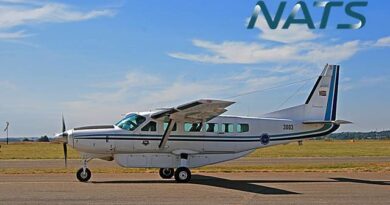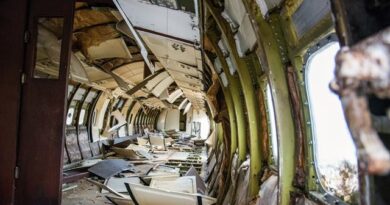What Is the Low-Level Wind Shear Alert System (LLWAS)?
A Vital Aviation Safety Tool That Saves Lives
In modern aviation, safety during takeoff and landing is paramount. One of the biggest threats during these flight phases is low-level wind shear—a sudden shift in wind speed and/or direction close to the ground. To detect and mitigate this threat, airports around the world rely on a powerful tool known as the Low-Level Wind Shear Alert System (LLWAS).
Originally developed in the late 1970s, LLWAS has become a critical component of airport safety infrastructure. But what exactly is LLWAS, how does it work, and why is it so crucial in aviation operations today?
The Origins of LLWAS: Responding to Deadly Wind Shear
The history of LLWAS is closely tied to some of the most tragic wind shear-related accidents in aviation. In particular, the 1975 crash of Eastern Air Lines Flight 66 at JFK Airport revealed the need for real-time, location-specific wind data near the runway.
As a direct response, the Federal Aviation Administration (FAA) initiated the development of LLWAS—a system designed to detect low-level wind shear and microbursts at and around airports, especially in approach and departure corridors. Since then, LLWAS has evolved through multiple generations to become more accurate and responsive, forming a core part of airport weather monitoring systems.
How LLWAS Works: Sensors, Software, and Smart Warnings
The Low-Level Wind Shear Alert System operates through a network of wind sensors, or anemometers, positioned strategically around an airport—usually at runway ends and along flight paths. These sensors measure wind speed and direction in real time, feeding data into a central processor that looks for rapid variations across sensor locations.
When the system detects a significant difference in wind patterns—such as a sudden tailwind replacing a headwind—it interprets this as potential wind shear or a microburst. An alert is then immediately sent to air traffic controllers, who pass the warning to pilots approaching or departing the runway.
This real-time detection and communication helps avoid accidents by giving pilots the chance to delay a landing, abort takeoff, or adjust their flight path.
Recommended Article: MSE, RMSE, R², and MAE in Airline Passenger Forecasting
Why Wind Shear Is So Dangerous for Aircraft
Wind shear near the ground can disrupt the delicate balance of lift and thrust required for safe flight during takeoff or landing. A sudden shift from a headwind to a tailwind, for example, can cause an aircraft to lose lift rapidly and descend prematurely—often with catastrophic results.
Microbursts, which are intense downdrafts associated with thunderstorms, are especially dangerous because they create sharp horizontal and vertical wind changes. LLWAS plays a vital role in detecting these events at low altitudes, where traditional weather radar systems might not be effective.
Evolution of LLWAS: From Basic Alerts to Advanced Integration
Over the decades, LLWAS has undergone multiple upgrades to improve coverage and accuracy:
- LLWAS-1: The original system, focused on basic wind shear detection using a small number of sensors.
- LLWAS-NE (Network Expansion): Expanded the number of sensors for better coverage, especially at larger airports.
- LLWAS-RS (Relocated Sensors): Strategically repositioned sensors based on geographic and topographic considerations.
Today, LLWAS is often integrated with Terminal Doppler Weather Radar (TDWR) and Automated Weather Observing Systems (AWOS), creating a multi-layered, high-accuracy weather monitoring network. This integration allows for more precise alerts, especially during severe weather conditions.
LLWAS in Action: Enhancing Pilot and Controller Awareness
For air traffic controllers, LLWAS is a key decision-making tool. It allows them to relay detailed, up-to-the-second weather data to pilots—helping manage landings, departures, and runway operations with greater confidence.
For pilots, LLWAS warnings serve as a vital source of situational awareness. By understanding the wind shear conditions ahead, they can make faster, better-informed decisions—such as increasing airspeed, initiating a go-around, or requesting a delay until the conditions improve.
This real-time communication between LLWAS, air traffic controllers, and flight crews significantly reduces the risks associated with adverse weather during approach or climb-out.
Global Use of LLWAS and Future Developments
Although originally developed for U.S. airports, LLWAS has since been adopted by various countries around the world—particularly in regions prone to frequent thunderstorms, coastal weather shifts, or mountainous terrain. Airports in Asia, Europe, and the Middle East are investing in this technology to match global aviation safety standards.
Looking ahead, future LLWAS systems may leverage machine learning and AI, enabling predictive modeling based on weather trends and historical data. Such advancements could make wind shear alerts even more accurate—and faster—than current systems allow.
Conclusion: LLWAS Is a Game Changer in Airport Safety
The Low-Level Wind Shear Alert System (LLWAS) is a cornerstone of modern aviation safety. It saves lives by giving early warnings about hazardous wind conditions where and when they matter most—near the runway, during takeoff and landing.
With evolving technology, expanding global adoption, and integration with other advanced weather monitoring tools, LLWAS remains a critical defense against wind shear-related incidents.
For airports, airlines, and aviation professionals alike, understanding and utilizing LLWAS is not just a regulatory necessity—it’s a commitment to safer skies.


